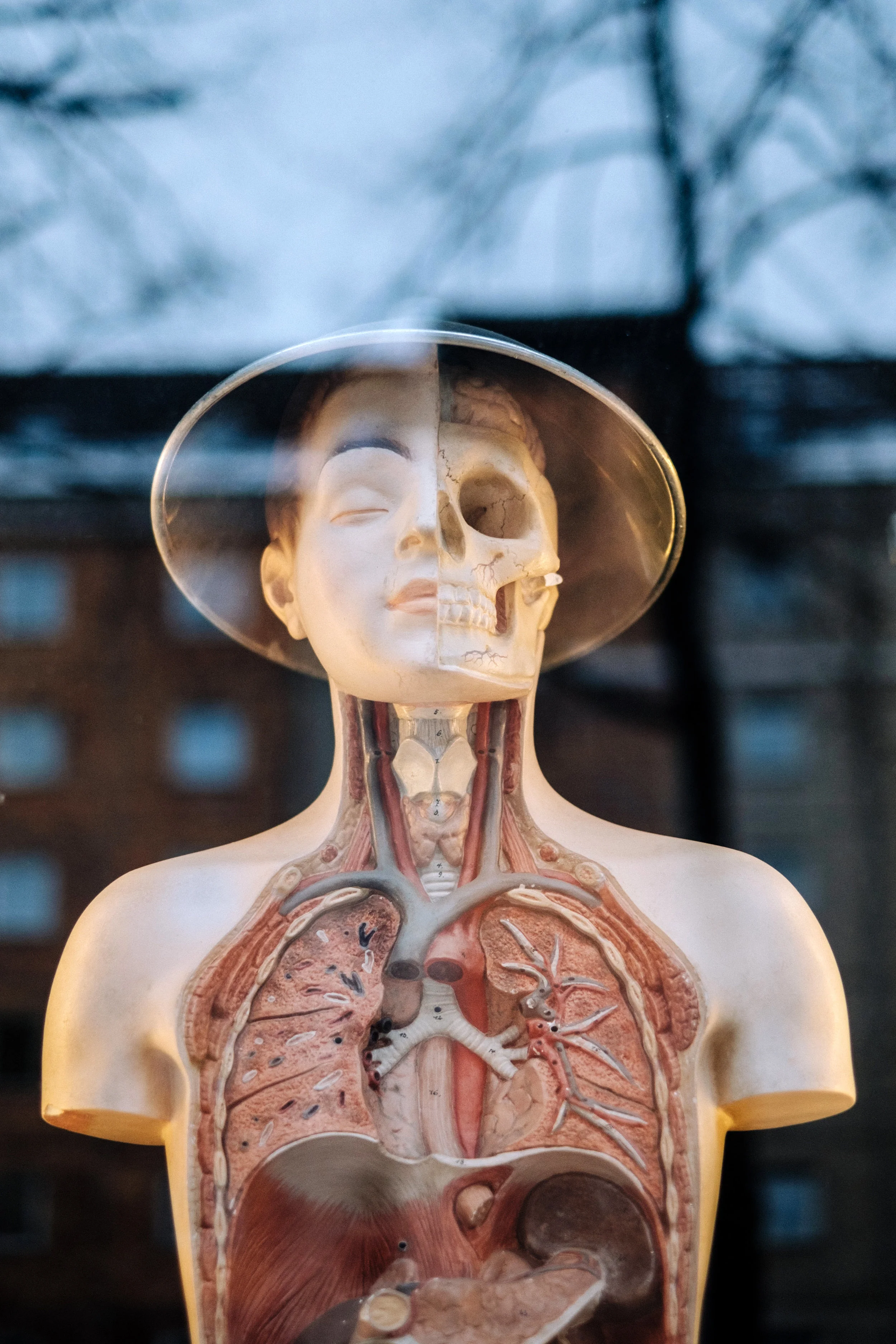BMC Part Three: Value Proposition
(If you’re using the Canvas, you’ll love my free Business Modelling eBook, full of tips for inventing and testing ideas that will change the world)
Without a doubt, Value Proposition is the hardest, most misunderstood element of the Business Model Canvas.
In fact, Strategyzer wrote a whole second book on just this topic, Value Proposition Design.
It’s hard is because we need to explore our customers’ hidden yet powerful motives.
Like with our intent, there’s often a good reason and a real reason behind every decision, and we need to understand both of them.
Our job is to step inside our customer’s brains, and see what makes or breaks their decisions.
By forming a deep understanding of what drives them, we can create offers that they will love, rather than twisting their arms with sales tactics.
The first thing we need to do is create a unique Value Proposition for each Customer Segment.
People can buy the same product at the same time for completely different reasons, and we need to understand each of them.
For example, you may have five people standing in line at a café.
Sarah is there for the caffeine, she has a big meeting coming up and hasn’t had much sleep.
Hannah is there for a catch-up with friends, and the café is a nice space.
Ben is there for the coffee flavour profile, keen to try the new Kenyan Roast.
Emma heard about the café from a food blog, and is there out of FOMO.
Tom is a traveller who just wants to go to the bathroom, and feels obliged to buy something.
Five separate motivations, five separate Value Propositions.
Jobs To Be Done
One useful way of thinking about our customers is to ask what jobs they are trying to do.
Some jobs are Functional, like getting from A to B, taking the kids to school, cleaning the gutters, buying water when you’re thirsty, etc.
Some jobs are Social, like participating in what your friends are doing, looking like a responsible parent, appearing to be professional, etc.
Some jobs are Emotional, like feeling sophisticated, the urge to travel the world, indulging our passions, avoiding shame, etc.
For each of these jobs, our customer has positive things they want to achieve (Gains), and/or negative things they wish to avoid (Pains).
As an example, when we’re shopping for a car, all three types of job come into play.
Firstly, there are Functional considerations like fuel economy, number of seats, cup holders and the amount of storage available.
We would like to tell ourselves that these are the reasons why we pick our cars.
But car companies know better than that.
They learnt long ago to sell to the other two jobs – Social and Emotional.
Social jobs are about lifestyle; how your car will enable you to do more adventurous things on the weekend and can fit a kayak on the roof.
Maybe it’s for work, and your vehicle needs to project your success to your customers.
What car brands do you associate with real estate agents?
Probably BMW and Audi, rather than a practical Daihatsu or an extravagant Lamborghini.
Emotional jobs are about expressing ourselves; making us feel accomplished, sexy, safety conscious, energetic, dignified, part of the in-crowd.
That’s why we care about the colour of the car, the leather seats and convertible roof.
It’s why we identify with certain brands and are repulsed by others – even if they all satisfy the same functional requirements.
This is an uncomfortable topic, because we like to think that we’re rational, intelligent shoppers.
We’re not.
Instead, start by looking at what really drives customers’ behaviour, continuously asking “Why?”
Then look at your own decision making process, and be honest.
What social and emotional factors are driving you?
Louis Vuitton sell leather goods, but what do they really sell?
Status.
Success.
Elegance.
A symbol of the elite.
You can buy a fake Louis in Bali, but it won’t give you the same feeling.
The real value proposition is the story we tell ourselves and the image we project to the world.
The Big Issue sell a magazine, but what do customers really buy?
A warm feeling.
A genuine, meaningful interaction.
The feeling of giving a hand-up.
In fact, if you ask The Big Issue’s customers about their purchase, they mostly don’t care for the magazine itself.
It’s a means to an end; a non-confrontational way of helping a person in need.
Uber offer the same functional service as a taxi, so why did it become so popular?
Convenience and comfort.
People like seeing the little car icon inching closer on their screen, it takes out the anxiety of waiting on the street for a cab.
People like good hospitality, even if it only involves 45 cents worth of bottled water and Mentos.
Paypal is easier than paying by cash or card, it relieved a pain point.
IKEA sell furniture in an inconvenient manner, so why are they so popular?
It’s the satisfaction of “building” it yourself; a mixture of pride and money “saved” known as The IKEA effect.
People also wander the store for inspiration – stealing ideas that will make their houses feel modern, comfortable and inviting.
Netflix sell access to content, but not physical ownership.
What makes them so appealing?
Low-risk participation.
Instead of risking $40-$60 on the DVDs of a new show, you can sample as much content as you like for a fixed price, removing all resistance to trying something new.
The real gain is the ability to see what everyone’s talking about – House of Cards, Stranger Things, Orange Is The New Black, allowing you to join in the conversation.
It turns out, people didn’t care about ownership if they could access their content anywhere in the world.
Pain or Gain?
The difference between a Pain and a Gain is blurry, but it comes down to framing.
Does my customer see their current situation as a negative, or is it adequate and they desire for something more?
Take deodorant for example.
Men’s and women’s deodorant is virtually identical at a technical level, but is sold in very different ways.
Image Credit: Tuut Harold, Old Spice
For men, it’s about Gain Creation.
Axe/Lynx sells the idea of desirability, usually to teenage boys.
Spray this and girls will find you irresistible.
Rexona sell the idea of elite performance, the promise that you too can be like your favourite sportsmen.
Old Spice sell the idea of masculinity, the idea that your grandpa’s favourite cologne is manly, and if you wear it you can be manly too.
All ridiculous when you think about it, and all extremely popular with their audience.
Image Credit: Dove
For women, it’s about Pain Relief.
Dove sell the promise of reduced irritation, for people who are unhappy with normal deodorant.
Nivea sell shame aversion, heaven forbid you were to have white marks on your top!
Rexona sell assurance, removing the fear of unexpected exercise causing you to break a sweat.
Is this demeaning?
Absolutely.
Unfortunately, it also seems to work, today’s marketers responding to the psychology of their customer.
Four questions for your business
· What jobs does my customer have to do?
· What does my customer want?
· Why do they want that?
· And why do they really want that?
Next, we’re looking at Customer Relationships…
This is a multi-part series on the Business Model Canvas.
If you’d like to jump straight to a particular section, go to:
Overview: How To Use The Business Model Canvas
Desirability: Customer Segments, Value Proposition, Customer Relationships, Channels
Feasibility: Key Resources, Key Activities, Key Partners
Viability: Cost Structure, Revenue Streams
Then once you've made your first canvas:
Reviewing: After Your First Model, Alarm Bells
Reinventing: Testing, What If?
Improving: Metrics, The Business Model Environment
Extensions: Pitching, Social Impact, Making It Great, What Next?
For more of the Value Propositions Case Studies series;
Part One featuring Louis Vuitton, AFL, Uber and TOMS
Part Two featuring Nespresso, Heineken, and Shoes of Prey
Part Three featuring a variety of Men’s Watches and Chocolate brands
Part Four featuring the classic iPod ads, Whiskey, Hardware, Butter and Barossa Tourism
Being The Best explores how companies frame themselves as industry leaders
Being The Cheapest covers strategies for demonstrating value for money
Social Proof examines how brands make themselves look popular and trustworthy
Cologne looks at how intangible gains are conveyed through imagery and design
Bottled Water compares ten brands selling the same product in different ways
If you’re crafting Value Propositions, you’ll love my free Value Propositions eBook, full of tips for designing and testing compelling Value Propositions that will delight your customers.












